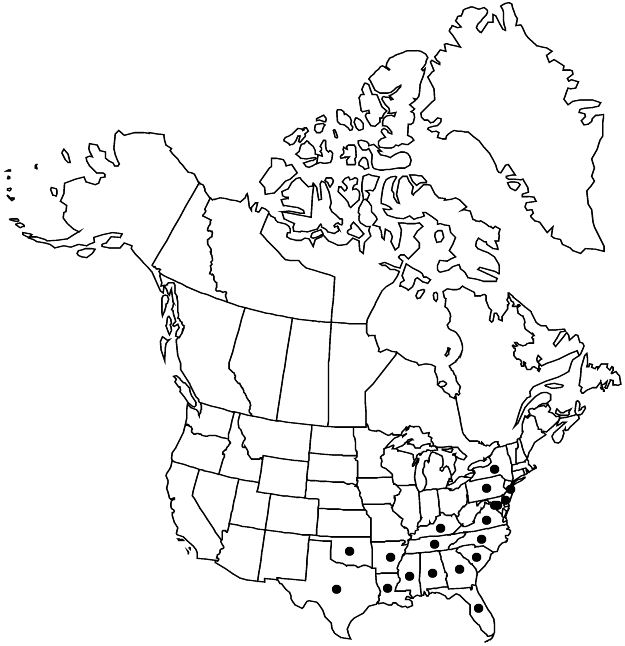Difference between revisions of "Hypericum crux-andreae"
Inst. Rei Herb. 2: 520. 1766.
FNA>Volume Importer |
FNA>Volume Importer |
||
| Line 22: | Line 22: | ||
|name=A. cuneifolium | |name=A. cuneifolium | ||
|authority=Chapman | |authority=Chapman | ||
| − | }}{{Treatment/ID/Synonym | + | }} {{Treatment/ID/Synonym |
|name=A. grandiflorum | |name=A. grandiflorum | ||
|authority=Rafinesque | |authority=Rafinesque | ||
| − | }}{{Treatment/ID/Synonym | + | }} {{Treatment/ID/Synonym |
|name=A. simplex | |name=A. simplex | ||
|authority=Zeyher ex Turczaninow | |authority=Zeyher ex Turczaninow | ||
| − | }}{{Treatment/ID/Synonym | + | }} {{Treatment/ID/Synonym |
|name=A. stans var. obovatum | |name=A. stans var. obovatum | ||
|authority=Chapman ex Torrey & A. Gray | |authority=Chapman ex Torrey & A. Gray | ||
| − | }}{{Treatment/ID/Synonym | + | }} {{Treatment/ID/Synonym |
|name=Hypericoides crux-andreae | |name=Hypericoides crux-andreae | ||
|authority=W. P. Adams & N. Robson | |authority=W. P. Adams & N. Robson | ||
| − | }}{{Treatment/ID/Synonym | + | }} {{Treatment/ID/Synonym |
|name=Hypericum stans | |name=Hypericum stans | ||
|authority=unknown | |authority=unknown | ||
| Line 52: | Line 52: | ||
|elevation=0–1500 m | |elevation=0–1500 m | ||
|distribution=Ala.;Ark.;Del.;D.C.;Fla.;Ga.;Ky.;La.;Md.;Miss.;N.J.;N.Y.;N.C.;Okla.;Pa.;S.C.;Tenn.;Tex.;Va. | |distribution=Ala.;Ark.;Del.;D.C.;Fla.;Ga.;Ky.;La.;Md.;Miss.;N.J.;N.Y.;N.C.;Okla.;Pa.;S.C.;Tenn.;Tex.;Va. | ||
| − | |discussion=<p>Hypericum crux-andreae, long known as Ascyrum stans, is a derivative of H. frondosum in which the tetramerous tendency in the perianth has become fixed. The low, multistemmed form with cuneate leaves, longer-</p><!-- | + | |discussion=<p><i>Hypericum crux-andreae</i>, long known as Ascyrum stans, is a derivative of <i>H. frondosum</i> in which the tetramerous tendency in the perianth has become fixed. The low, multistemmed form with cuneate leaves, longer-</p><!-- |
| − | --><p>pedicellate flowers, and shorter sepals (A. cuneifolium, A. stans var. obovatum) cannot be separated from typical H. crux-andreae.</p><!-- | + | --><p>pedicellate flowers, and shorter sepals (A. cuneifolium, A. stans <i></i>var.<i> obovatum</i>) cannot be separated from typical <i>H. crux-andreae</i>.</p><!-- |
| − | --><p>Linnaeus included | + | --><p>Linnaeus included “<i>Hypericum</i> ex terra mariana, floribus exiguis luteis” under his phrase name for Ascyrum crux-andreae; that element of the protologue refers to <i>H. mutilum</i> Linnaeus; see N. K. B. Robson (1980).</p> |
|tables= | |tables= | ||
|references= | |references= | ||
| Line 78: | Line 78: | ||
|publication year=1766 | |publication year=1766 | ||
|special status=Endemic;Selected by author to be illustrated | |special status=Endemic;Selected by author to be illustrated | ||
| − | |source xml=https://jpend@bitbucket.org/aafc-mbb/fna-data-curation.git/src/ | + | |source xml=https://jpend@bitbucket.org/aafc-mbb/fna-data-curation.git/src/8f726806613d60c220dc4493de13607dd3150896/coarse_grained_fna_xml/V6/V6_140.xml |
|genus=Hypericum | |genus=Hypericum | ||
|species=Hypericum crux-andreae | |species=Hypericum crux-andreae | ||
Revision as of 17:46, 18 September 2019
Shrubs, usually erect to suberect, rarely decumbent and rooting, usually unbranched, rarely sparsely branched distally, 1–13.5 dm. Stems: internodes 2–4-lined at first, then 2-winged. Leaf blades usually oblong to elliptic, rarely obovate to oblanceolate or triangular-ovate, 12–36 × 6–16 mm, base articulated, rounded to slightly cordate-amplexicaul, without glandlike auricles, margins plane to subrecurved, apex rounded to obtuse, midrib with to 3 pairs of branches. Inflorescences ± narrowly cylindric to narrowly pyramidal, 1–3(–7)-flowered, branching dichasial, from to 4 proximal nodes. Flowers 20–30 mm diam.; sepals persistent, enclosing capsule, 4, unequal, outer broadly ovate to circular, 9–20 × 9–18 mm, apex apiculate or obtuse to rounded, inner narrowly elliptic to lanceolate, 7–14 × 2–4 mm, apex acute to subacute; petals 4, bright yellow, obovate, 11–18 mm; stamens persistent, 80–100; ovary 3(–4)-merous. Capsules narrowly ellipsoid-ovoid, 7–10 × 5–6.5 mm. Seeds not carinate, 0.8 mm; testa shallowly scalariform. 2n = 18.
Phenology: Flowering summer–fall.
Habitat: Moist to dry, pine savannas and flatwoods, meadows, bogs, other wet habitats, lake and pond margins
Elevation: 0–1500 m
Distribution

Ala., Ark., Del., D.C., Fla., Ga., Ky., La., Md., Miss., N.J., N.Y., N.C., Okla., Pa., S.C., Tenn., Tex., Va.
Discussion
Hypericum crux-andreae, long known as Ascyrum stans, is a derivative of H. frondosum in which the tetramerous tendency in the perianth has become fixed. The low, multistemmed form with cuneate leaves, longer-
pedicellate flowers, and shorter sepals (A. cuneifolium, A. stans var. obovatum) cannot be separated from typical H. crux-andreae.
Linnaeus included “Hypericum ex terra mariana, floribus exiguis luteis” under his phrase name for Ascyrum crux-andreae; that element of the protologue refers to H. mutilum Linnaeus; see N. K. B. Robson (1980).
Selected References
None.
